Email Warm Up Service
All you need to know about automating your email warm-up process
Email Warm Up Service - All You Need To Know
How many emails are heaped up in your spam folder fated to be automatically deleted in 30 days? How many times have you accidentally deleted an email in the spam folder and kept going as if nothing happened?
Every email takes a severe amount of time and resources to craft, but it’ll only matter if they end up in recipients’ primary inboxes. Unfortunately, it’s not the case for more than 20% of all emails. According to research, the percentage of emails either going to spam or not delivered increased around 4% in 2020 compared to 2019.
Regardless of what kind of email campaign you run, mastering email deliverability is one of the critical ingredients to survive. Therefore, warming up a new email domain and IP address should be an essential part of your email activities.
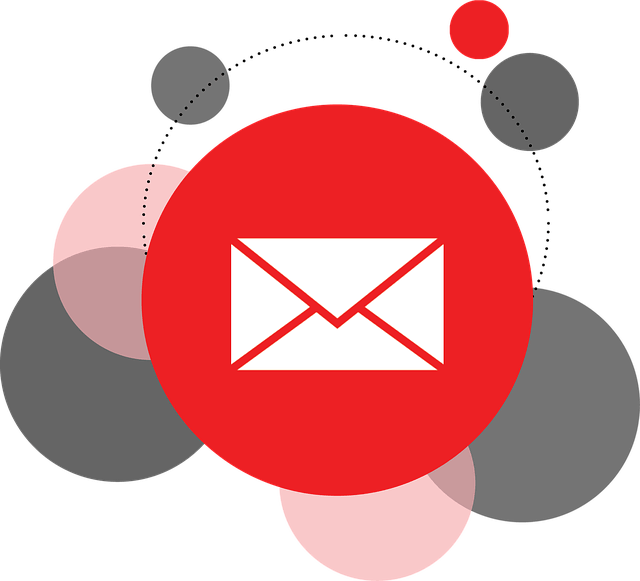
Email warm-up helps to increase sending limits as soon as possible by building a solid reputation. It’s a process of sending a gradually growing number of emails while aiming for high engagement rates throughout a few weeks.
But it’s just one part of the story.
Even though you try the best practices to boost your deliverability rates, assisting your efforts with proper software is a must in today’s highly competitive market, where email providers also get more competent at dealing with suspicious-looking emails.
Thus, we’ll today cover how you can scale your email marketing by utilizing some technological assistance. And you will also be geared to begin your next email campaign once you read this guide.
What is an Automated Email Warm Up Service?
The golden rule of scaling is “not to do anything you can assign to others.” Launching a new product or campaign already involves lots of operations you have to deal with. And spending your valuable time on the technical details of warming up an email domain or IP address wouldn’t be the best use of your resources when sophisticated software can undertake it.
We’re talking about automated email warm-up services. These tools send many emails to thousands of accounts they own and receive various interactions such as getting an email out of the spam folder, opened, labeled as important, and getting a response.

The research by Litmus points that email marketers’ most favorite metrics are
- Open, click and bounce rates
- Spam reports
- Conversions
- Deliverability
Automated email warm-up services can be your go-to helper for improving all these metrics.
The benefits of email deliverability tools
Generally, an email warm-up service is like your assistant working non-stop on your personal branding to create a credible sender image for you. If needed, they’ll even help you to fake it until you make it.
As a brief presentation of all the benefits of using email warm-up tools, here’s a list of what they can do for you:
- Improve your email deliverability rate by convincing ISPs (Internet Service Providers) that you’re an authentic sender.
- Deliver more of your emails into recipients’ primary inboxes, where they spend most of their time while engaging with their emails.
- Enable you to send more emails a day by building a solid reputation, paving the path for scaling.
When Do You Need to Use Email Deliverability Services?
Email deliverability tools may come in handy in several situations. A few examples of their use cases include repairing a damaged sender domain, launching a new email campaign, migrating to a new email service provider, and so on.

Warming up an email is also among those use cases, and there may be three different scenarios where you’d need to start the warm-up process:
New IP address
Email service providers have shared IP addresses that are best to use when you just start your email marketing activities, and you’re still a newbie in it. But once the volume of emails you send is high enough, you’ll be better off moving to a dedicated IP address to protect your reputation.
However, even though you’ve earned credibility with your current email domain, ISPs won’t recognize your new IP address. And that’s where email warm-up services may come to your help.
New domain address
If you’re sending emails for various campaigns and purposes, you may want to use different subdomains for your sender email address for each of them—for example, info@yourdomain.com and receipts@sales.yourdomain.com.
New IP & domain address
This scenario usually happens when you’re just starting your email marketing journey. If you’ve already built some reputation, it’s not recommended to change both IP and domain addresses at the same time.
In this stage, besides applying email deliverability best practices, you should also utilize warm-up tools to be able to scale as soon as possible.
How Do Email Warm Up Tools Work?
These tools compensate for the negative engagements you get from the emails you send to your real prospects by enabling you to receive positive engagements from the emails you send to the predefined addresses.
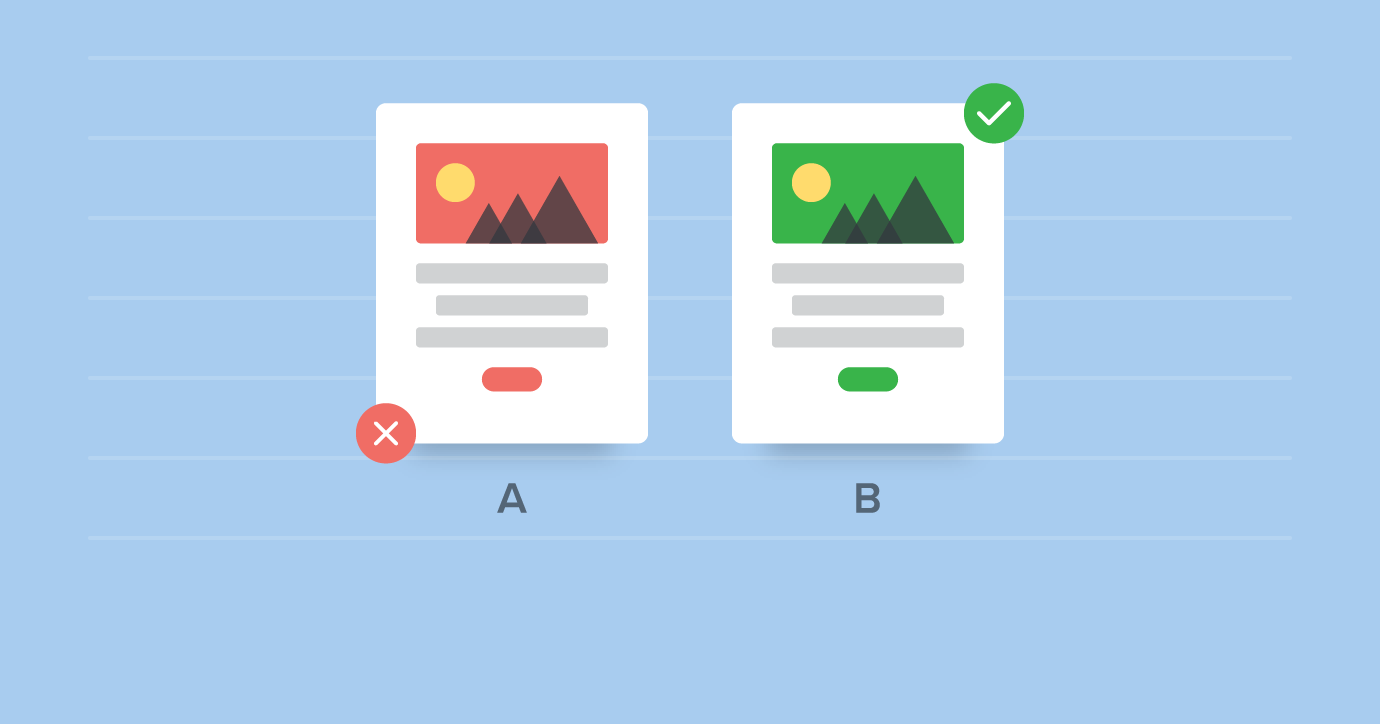
Email warm-up services are A/B test enablers. How?
Even though doing tests is the way to optimize campaigns, they may cause your reputation to lower as recipients’ reaction to these emails is unknown.
On the other hand, email deliverability tools are always there to feed your email flow with positive engagements so that you’re free to conduct as many tests as you wish.
Now let’s elaborate on InboxAlly’s step-by-step working process:
Download Seed emails
Once you’ve registered on the website, you gain access to InboxAlly’s dashboard, where all the magic happens.
First, you should go to the Seed Emails section. InboxAlly provides you with the list of email addresses that you should download and add to your email sending software there.
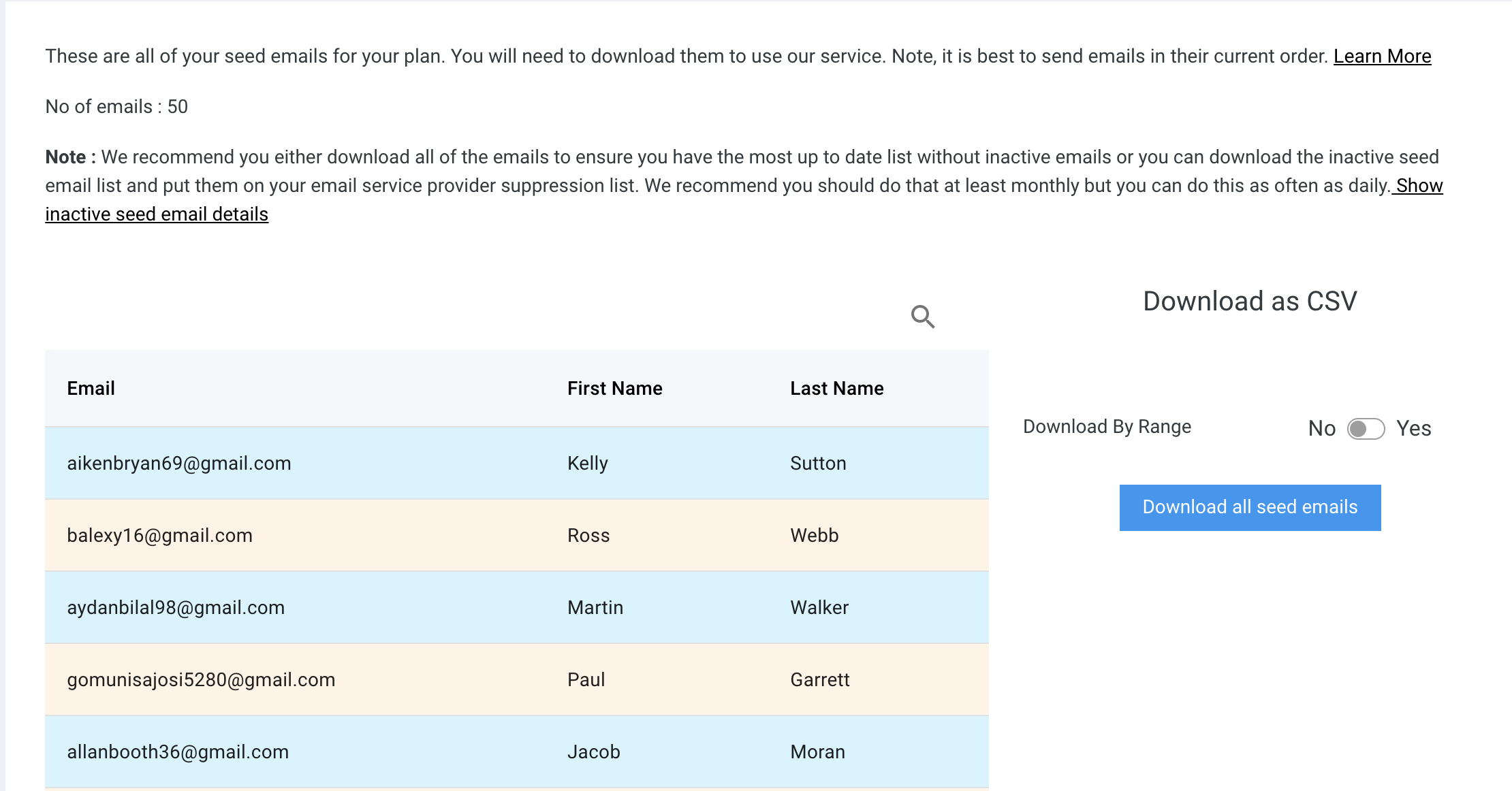
Add sender email
Then you should add the email address you use for sending emails on the InboxAlly app so that it can detect the emails coming from you. To do that, here are the steps to follow:
- Go to the Sender Emails section in the InboxAlly dashboard;
- Create a new one by clicking Add new sender email button;
- Verify it through the link coming to your mail;
- Once it’s verified, you’ll notice a Verified check mark in front of the email on the website.
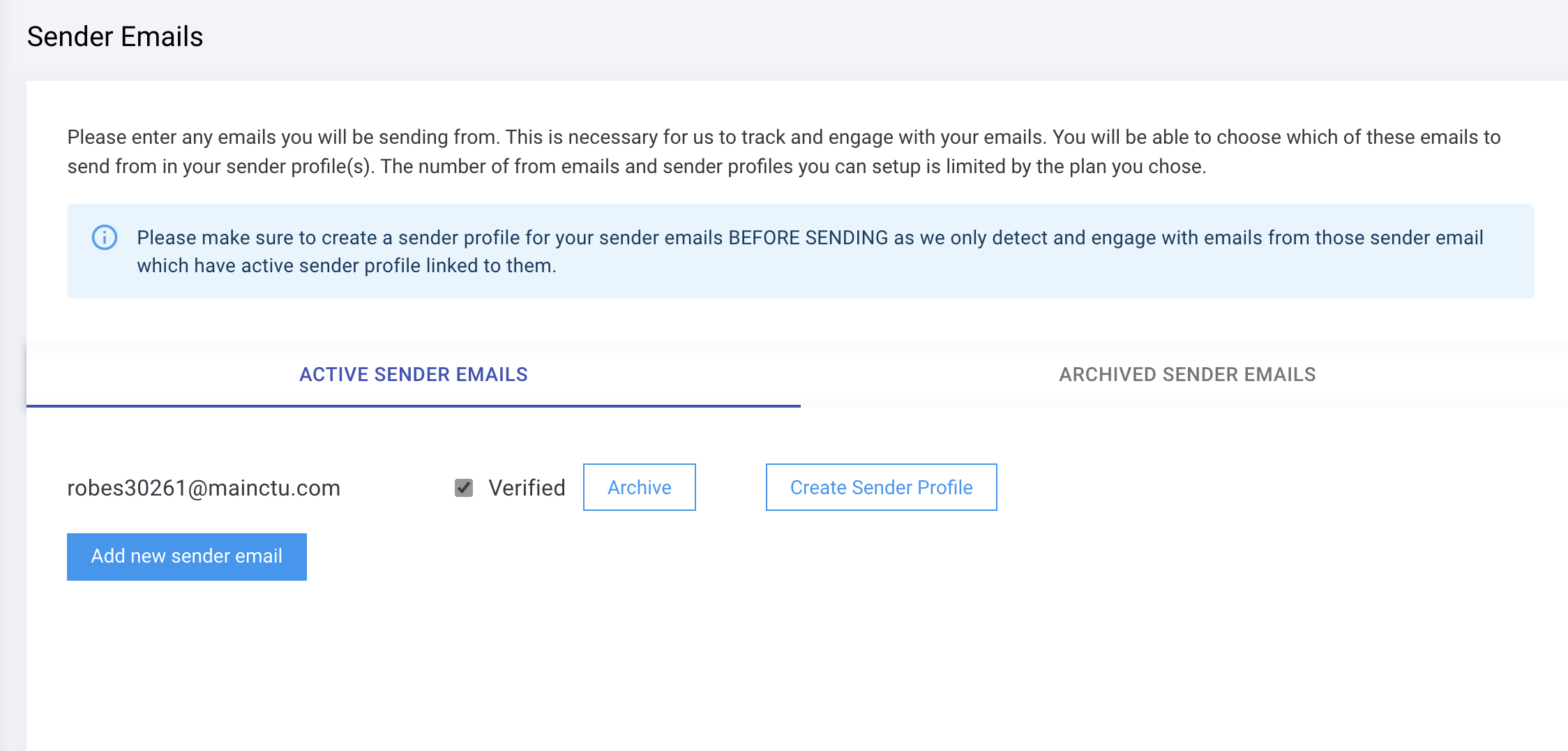
Create sender profile
For each email address you add, you should also create a sender profile where you can choose the percentage of each type of interaction (open an email, scroll down, remove from spam, reply, etc.) you want to receive.
To create your first sender profile, follow the steps below:
- Enter Sender Profiles section in the dashboard;
- Click Create Sender Profile button;
- In the opening window, you should fill in the required information and choose your desired preset, open rate, and the percentage of each type of engagement you aim to receive;
- Then click Apply Instructions button to finish the setup.
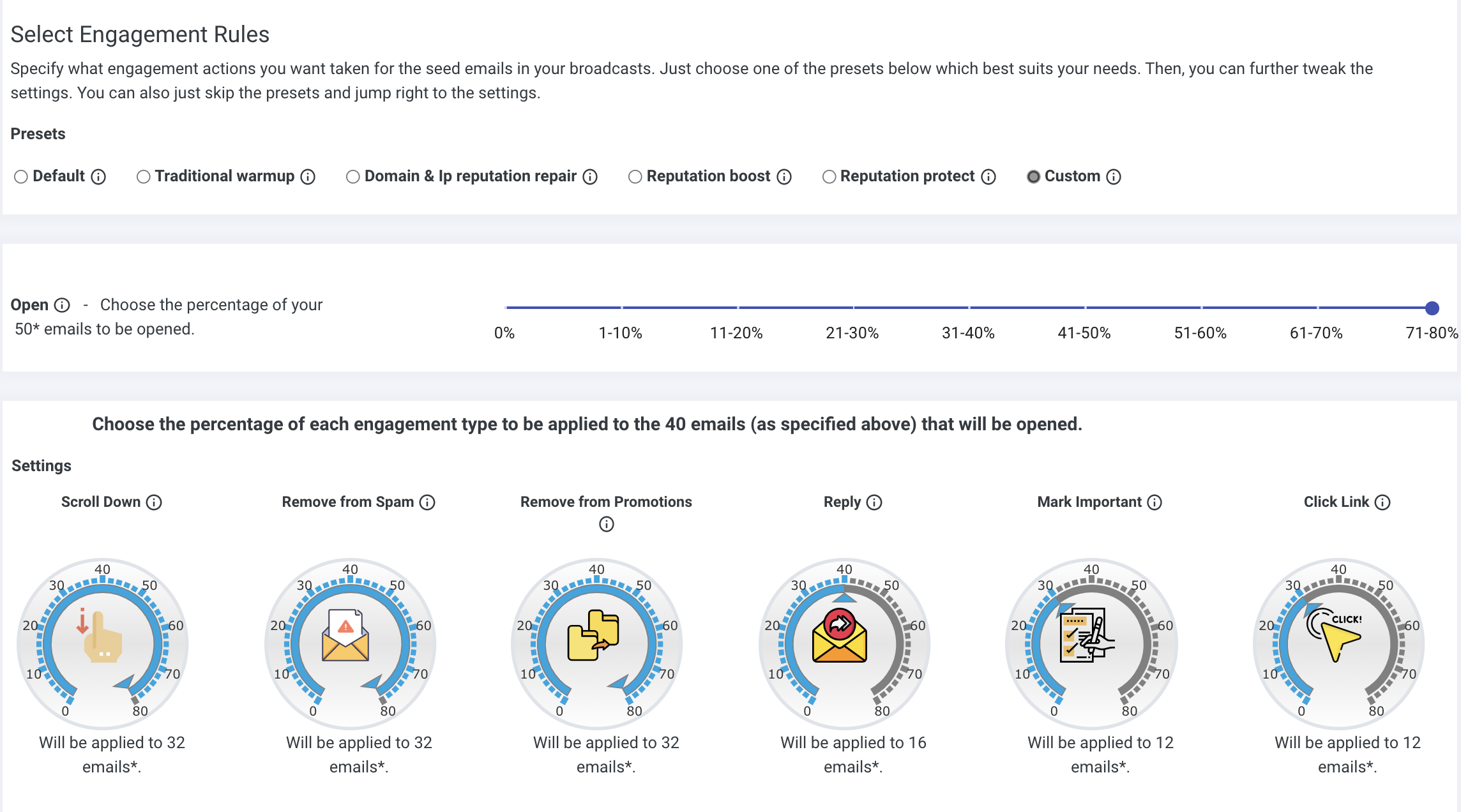
Send a broadcast
Once you send emails from your email marketing platform, you’ll be able to see the stats of emails in the InboxAlly dashboard in a short time. Going to the Broadcasts section is enough to monitor all the populated data. Keep in mind that it may take a while for data to be gathered after you send emails.
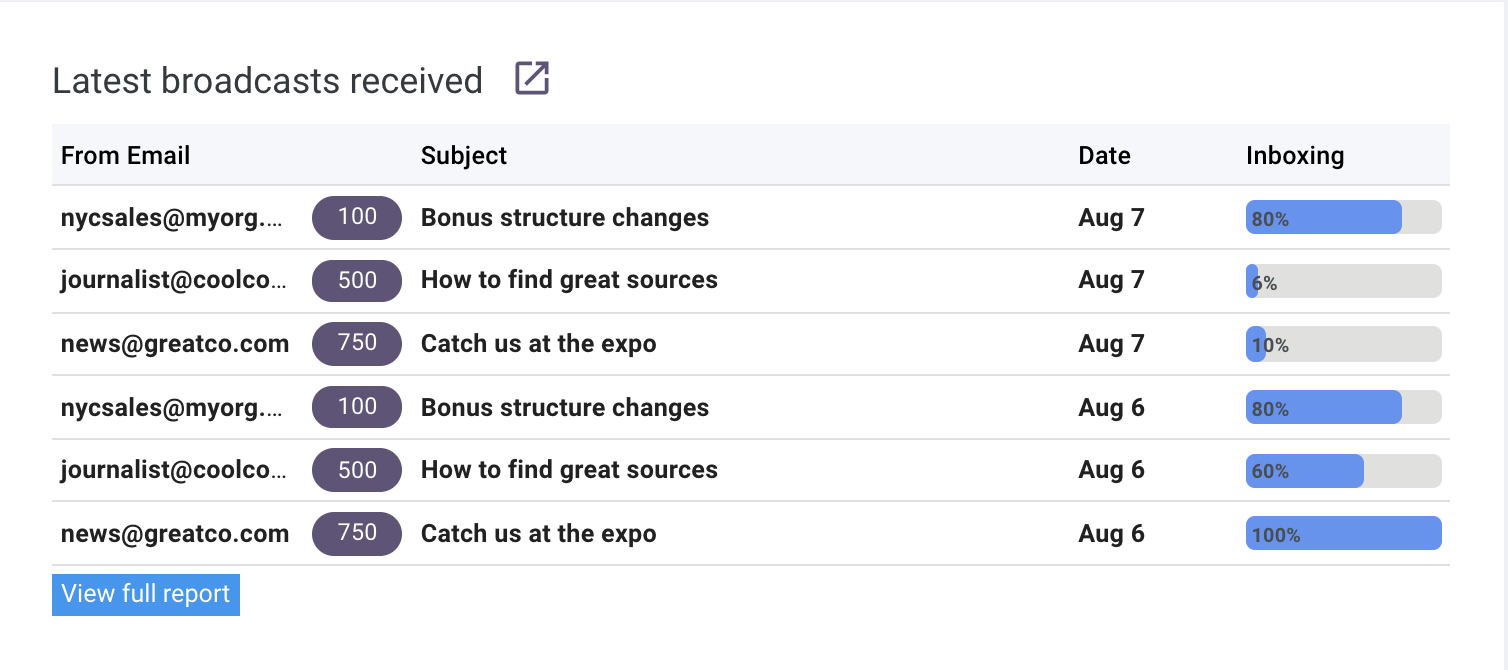
Analyze Reports
InboxAlly also provides you with detailed and rich reports where you can filter and see the results. After you’ve finished all previous steps, you can go to the Reports section and take command of your email marketing deliverability performance.
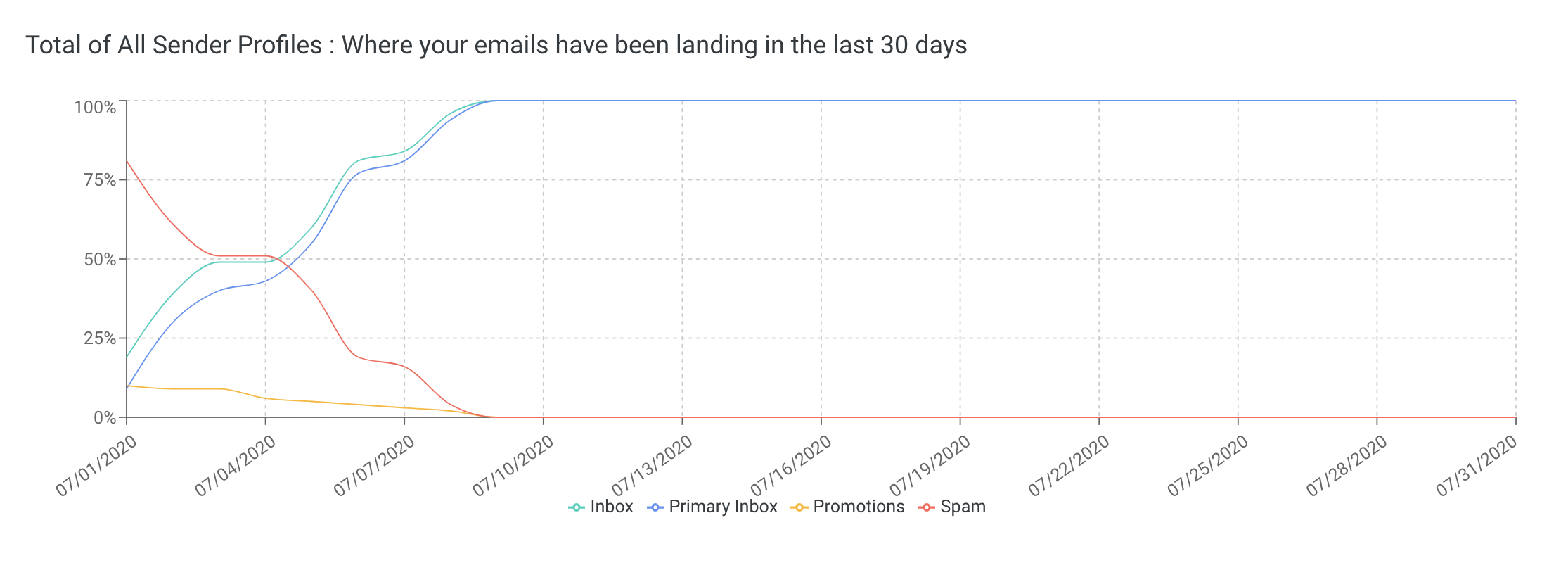
How Long Does it Take to Warm Up an Email?
Think about it for a moment:
You’ve finally decided or convinced top managers that it’s time to pay more attention to email marketing. After thorough research and planning, you’ve set up everything, and your team is ready to embark on a new journey.
However, if you’ve come so far in this article, you’re already aware that one more critical step is left: warming it up. But how long should you wait before being able to operate at full scale?
There’s not a clear answer to that as the amount of time warming up an email takes depends on many factors including, but not limited to:
- Is it a new email address, or have you used it before?
- What is your email domain’s current reputation like?
- How many emails are you planning to send?
- How much engagement do you receive from your real emails?
- How old is your email address?
I can hear you; if you have to mention an approximate period to your superiors, tell them
Email warm-up usually takes around 3-4 weeks.
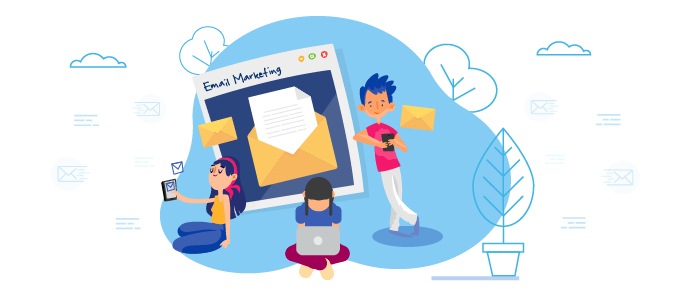
All in all, warming up an email is all about constantly sending a higher volume of emails. Leveling up speed here distinguishes an amateur warmer from an experienced one; If you go too slow, you’ll waste time, but if you go too fast, you may be assigned a poor reputation score by email service providers seeing you as a spammer.
Any Downsides of Using Email Warm Up Service?
As a general guide, they’re not usually harmful. But you should still be careful in choosing the tool you’ll use.
Some cheap tools may seem more attractive, and they may actually be good for the initial warm-up of a new domain. However, when it comes to repairing a ruined reputation, low-cost services will probably let you down. It’s not even worth to take a risk on that as there’s too much at stake.
What makes InboxAlly one of the best out there is that many companies in various sizes continually use it; thus, it’s able to help maintain and protect reputation even beyond initial warm-up.
Manual Warm Up vs. Email Deliverability Tools
Email warm-up services may be very beneficial, but do you really need to use them when you can warm up your email domain and IP address manually? Short answer: Yes, you do. Long answer: It’s always better to use both.
But wait... there’s more:
Some best practices are a must-do whether you use email warm-up tools or not. If you choose an excellent deliverability service, they’ll put in a tremendous amount of work to increase and maintain your domain and IP reputation. There are some reasons to be careful so always do your homework. At this point, the last thing you would want is spam complaints.
Best practices
Luckily, there’re more than enough ways to seem like a genuine sender so that recipients wouldn’t think about reporting your emails as spam:
- Double opt-in
- Sender names and subject lines
- Consistent frequency
- Email design
- Easy unsubscription
- Email list segmentation (E.g., Ramp up slowly and send to your most engaged users first.), etc.
Let’s elaborate on them a bit:
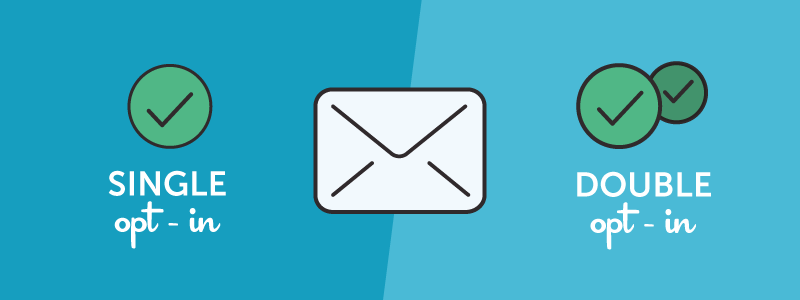
Double opt-in strategy only adds people to your subscriber list if they confirm their application with the link sent to their emails. Benefits? Lower bounce rate, fewer unsubscriptions, protection from adding spam emails to your list, etc.
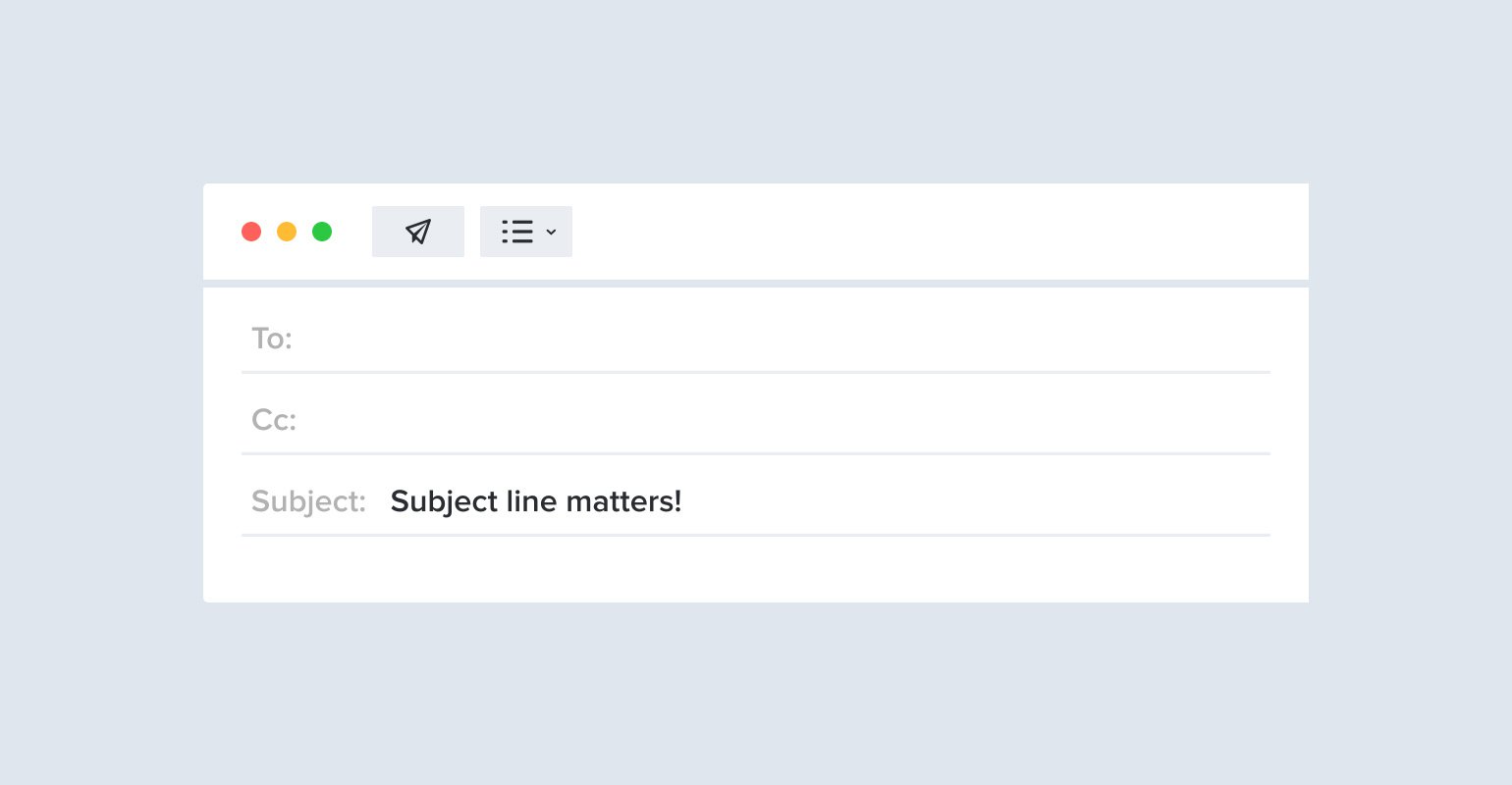 Source: Mailerlite
Source: Mailerlite
Moreover, the very first impressions recipients get from you are based on your emails’ subject lines, sender names, and email design. Fail to humanize them and you will immediately ask yourself why your emails are getting reported as spam. Some common mistakes here include typing all letters in a subject line uppercase and using spammy tone in a subject line.
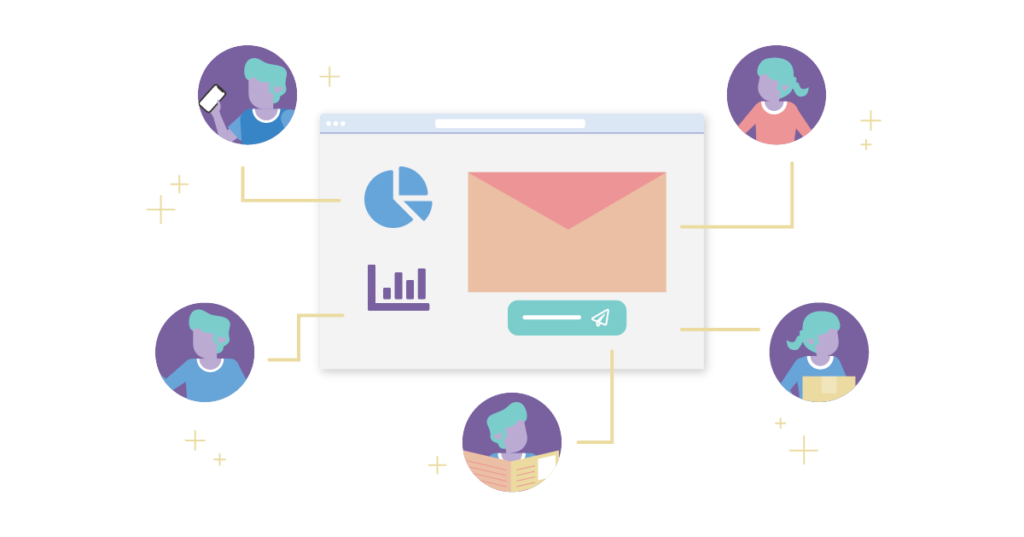
Additionally, segmentation of your email lists gives you an ability to scale by only sending emails to your most engaged users first, enhancing your overall warm-up speed.
Always keep in mind that your recipients are humans. So it’s best to give them a clear idea of what, when, and how much to expect. Maintaining your email sending consistency is one of the most underrated issues you need to be aware of.
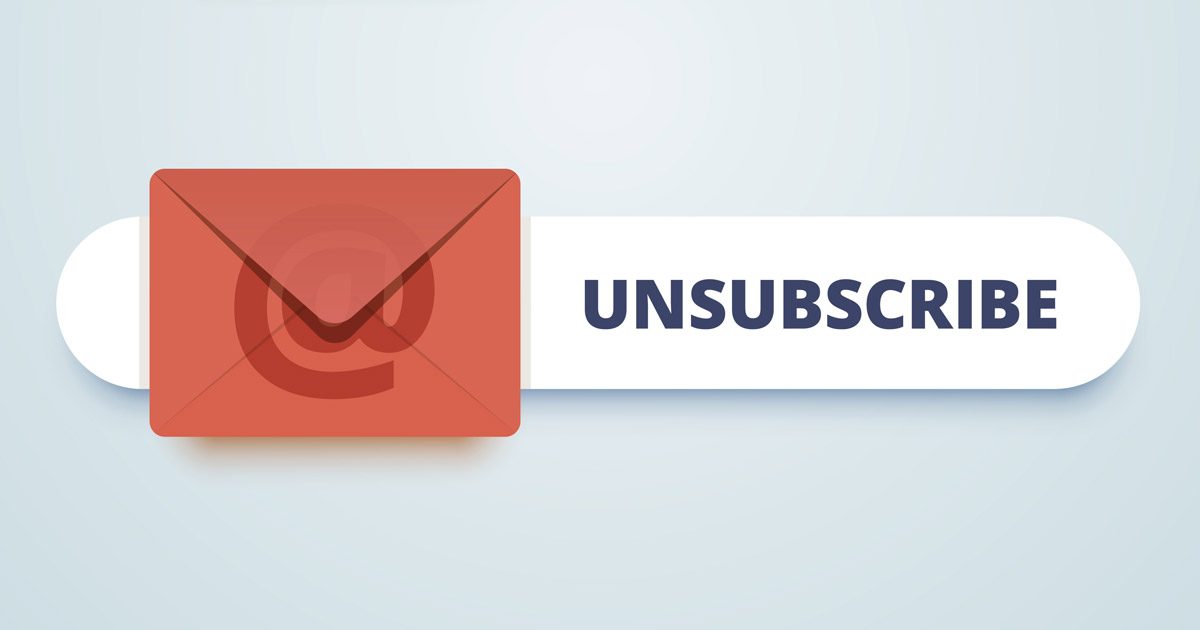
Last but not least, never be afraid of unsubscriptions. They’re almost normal to the point that not getting enough of them would be something to worry about. Provide easy ways to unsubscribe to people so that you don’t keep ruining your reputation by sending emails to people not interested in them.
If you want to learn more in-depth about the email deliverability best practices, check out our other blog post.
About the Author
Kamran Shukurlu currently specializes in writing about Email Deliverability and Digital Marketing. Having 7+ years of analytics, system building, writing, he's also achieved tremendous results for various brands as an Email Marketing and Automation Specialist.